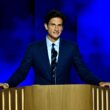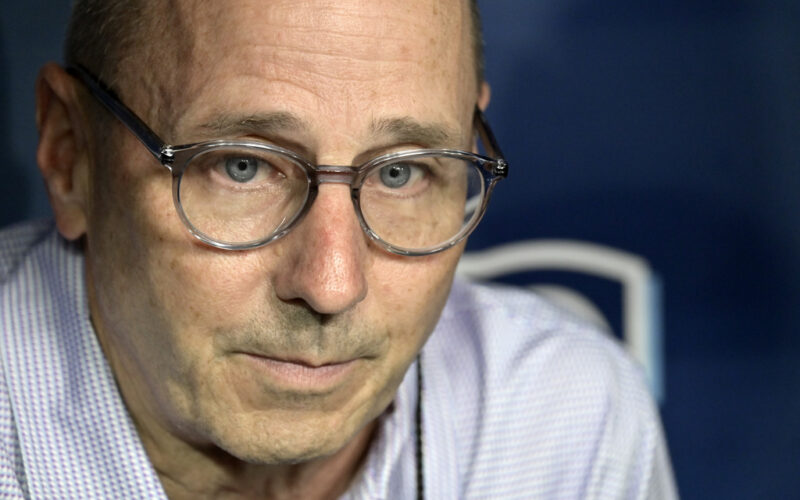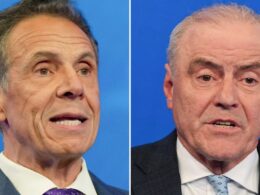With the Yankees’ offseason underway and fears of a future work stoppage hovering over Major League Baseball, Brian Cashman was asked how potential economic issues could impact his team this offseason.
At the center of baseball’s latest labor fight is the matter of a salary cap, something owners have always wanted and players have firmly stood against. Yankees owner Hal Steinbrenner, willing to spend on but generally frustrated by $300 million payrolls despite having among the league’s highest revenue, has voiced conditional support for a salary cap. That’s contingent on the number and the stipulation that it comes with a salary floor.
With the current Collective Bargaining Agreement set to expire after the 2026 season, owners will surely push for a cap again. Players will surely reject it. Hence, the industry is bracing for another – and possibly longer – work stoppage than the one that saw owners lock players out for just over three months from late 2021 to early 2022.
In the meantime, teams and players must operate under financial parameters that could look different after next season.
“That’s above my pay grade,” Brian Cashman said during a Thursday press conference when asked if the possibility of a future salary cap or increased Competitive Balance Tax rates will impact the Yankees this winter. “It’s business as usual, as far as I’m concerned. And every time I’ve ever dealt with Hal Steinbrenner, he’s like, ‘Just bring whatever to me.’
“So that’s how we’ll continue to roll. But I’m thinking about 26, not 27.”
While Cashman said he’s taking a “business as usual” approach – he routinely says that Steinbrenner is always willing to listen on possible player acquisitions — it’s worth remembering that the Yankees avoided a CBT, or luxury tax, penalty ahead of the last anticipated work stoppage with a $208 million payroll for the 2021 season.
The Yankees won’t be able to avoid a penalty this time around, as they already have a projected payroll of $278.9 million for the 2026 season, according to Cot’s Contracts. While that includes Cody Bellinger’s $25 million option — he’s expected to decline that and become a free agent but could re-sign — the Yankees’ projected payroll would still be over the lowest tax threshold, $244 million, for 2026. That’s before making any additions to the roster.
The next tax thresholds are set at $264 million, $284 million and $304 million. Surpassing a higher threshold comes with a higher penalty, as does being a repeat offender.
The highest tax threshold was $301 million in 2025. The Yankees had a CBT payroll projected at $318.7 million this past season, per Cot’s. That ranked third behind the crosstown rival Mets ($341.7 million), who didn’t make the playoffs, and the super-spending Dodgers ($415.2 million), who just returned to the World Series – and mocked those who criticize their payroll – after beating the Yankees in last year’s Fall Classic.
The varying results of those three teams demonstrate that an exorbitant payroll alone doesn’t guarantee anything. However, with the Dodgers playing in their fifth World Series in nine years and the Yankees fresh off an ALDS exit and without a championship since 2009, a segment of the Bronx faithful is demanding significant upgrades from Steinbrenner and Cashman this offseason.
Doing so will all but require some spending at a time of economic uncertainty in the sport. However, Cashman, as is normal, didn’t share any specifics on the Yankees’ payroll plans for 2026, though he did make sure to insist that Steinbrenner, absent from the postmortem presser, was “frustrated” with the way the 2025 season ended.
“That’s the one thing that the Steinbrenner family provides for this city, is constantly having a team that you can put forth that you can believe is capable of a championship,” Cashman added during a lengthy defense of Aaron Boone. “That’s the job we’ll be doing once again next year.”
But when asked about the Yankees’ weaknesses heading into the offseason – their biggest questions are in the outfield and bullpen – the general manager simply said he needed to “weigh the available marketplace, via free agency or trades, with the committed payroll vs. the available payroll.” He also alluded to younger – and cheaper – players “knocking on the door.”
“I think we have a lot of good,” Cashman later said when asked if there is already a championship framework in place, “but the job is for us to try to make it better.”








